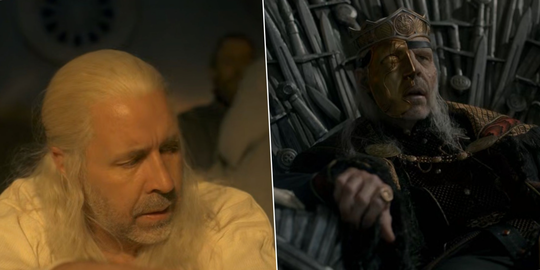House of the Dragon Fever: Unmasking Viserys I Targaryen's Mysterious Illness
When the House of the Dragon fever gripped King Viserys I Targaryen, it changed the course of history. Before the rash struck the king, he was known as a committed monarch and just ruler, with none aware of the illness that would return to plague his later years. His sudden change of heart – some might say madness – inspired the question of his fitness to rule, resulted in his defiant daughter claiming the throne ahead of his desired heir, and drove remarriage for the ruler. What was the unnamed illness that afflicted Viserys I Targaryen?
During his early reign, Viserys I struck the Seven Kingdoms as the model of a just ruler. He succeeded his grandfather, Jaehaerys I Targaryen, to the Iron Throne, and from the outset, he was resolute in his desire to serve the realm to the best of his abilities. However, over time, cracks began to emerge in his resolve. While he remained a competent king, his reign was fraught with conflict, as he clashed with his daughter Rhaenyra regarding her marriage and children, supported a disputed heir to the Stepstones archipelago, quarreled with his Hand, and was unforgiving towards perceived treachery.
Viserys’ physical health was good when he ascended to the throne at the age of 19. He later remarked that a small cut on his back “hardly hurt at all,” other than to keep it clean, but it became infected, and the king had to dip his hand in a bowl of maggots to prevent the infection from spreading. It was not an isolated incident of infection, either; by the second episode, he had contracted several other sores.
In the third episode, his right hand was seen to be badly infected, and he had lost two fingers. Although there is no clear indication on whether Viserys knew he had developed an illness or its severity, it did appear to be progressing rapidly, much in keeping with a degenerative illness. It left his body ravaged with sores, which were covered with honey and heated goat fat to help draw out impurities. The king dismissed comments regarding his appearance as those of a jealous court. He attributed his right hand’s lack of movement to sitting on the throne for too many years. It was only in his final moments that he conceded he had been fighting an illness for quite some time.
In an interview with DS, actor Paddy Considine – who plays Viserys in the House of the Dragon mini-series – reveals that the Targaryen king suffered from a form of leprosy, a skin disease that causes lesions, local inflammation, and nerve damage. Seemingly anticipating backlash for his characterization of the king, Considine emphasizes the treatment of leprosy in the Middle Ages, noting, “People with leprosy got treated really badly. They were ostracized and discriminated against. The frightening thing is that all this was happening at a time when, with the right treatment, they could have cured [Viserys].”
Despite leprosy reportedly being quite common in the medieval period, Considine reveals that Viserys concealed his illness due to the prevailing ableism in the Middle Ages. In his view, Viserys believed that a strong king did not publicly acknowledge any signs of weakness or frailty, which could be construed as an indication that the Iron Throne was not suitable for him. Armed with this understanding, and listening to Viserys’ confession to Alicent, it appears as though he did seek medical intervention and other remedies on numerous occasions. However, he did not tell his family members for fear of burdening and worrying them at a time when threats from across the Narrow Sea, Dorne, and the Stepstones required their focused attention.
In his late 40s, Viserys’ appearance and ability to rule began to deteriorate. The king required assistance to climb the broad, winding stairs to the throne, and his face was no longer recognizable. In arguably his last act as a substantively capable ruler, he established the Faith Militant, which partially addressed the rampant iniquity that had festered in the Seven Kingdoms for years. Viserys’ fevered withdrawal from affairs of state left him unbeknownst to the fact that his decrees regarding the powers of the Hand of the King and the Regency, as well as his decision regarding Rhaenyra’s son Aegon’s claim to the throne, were often for the wrong reasons, which led to further conflict.
During his final hours, Viserys removed his gold mask, and in his demented state, revealed his disfigured face















